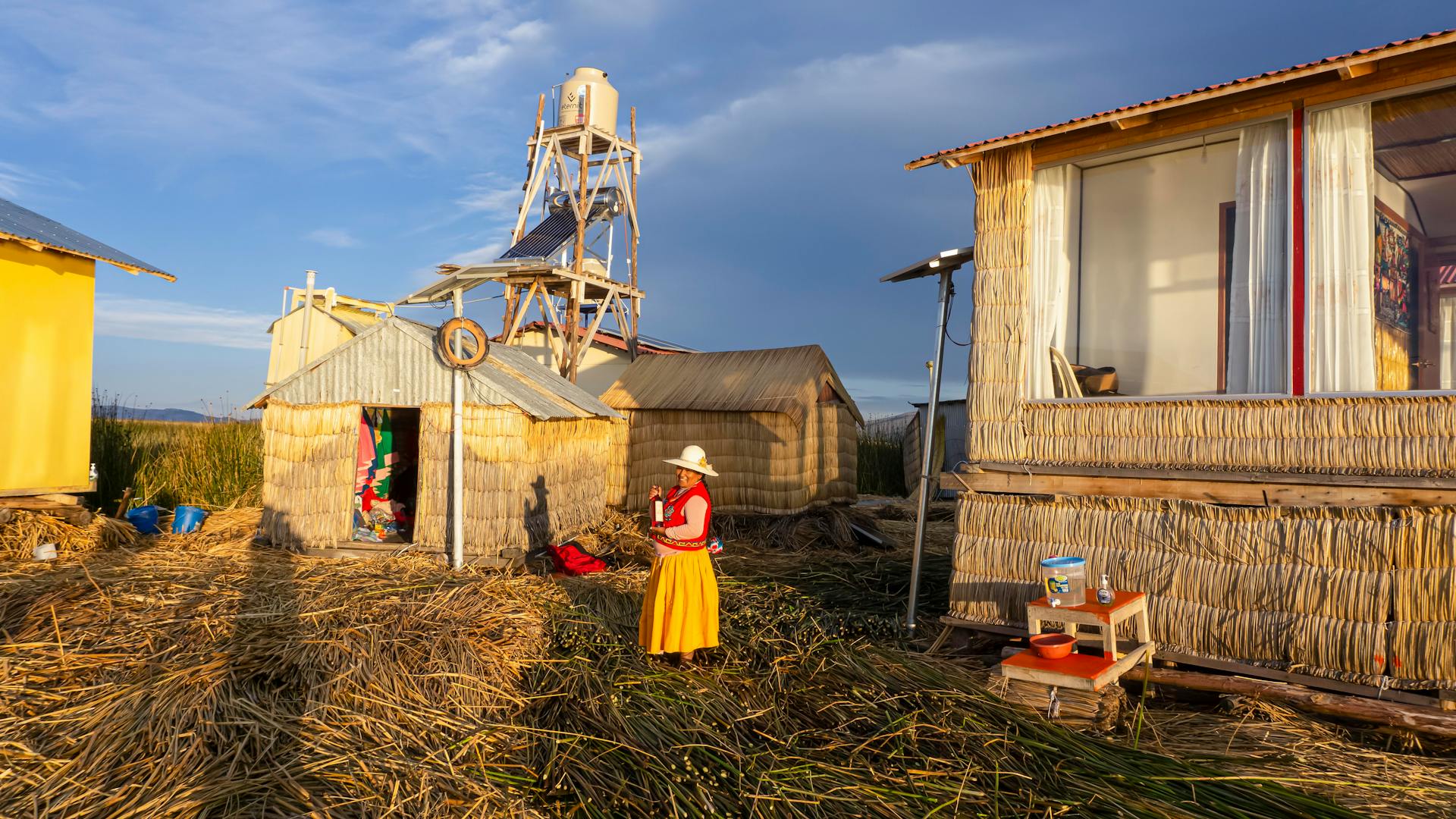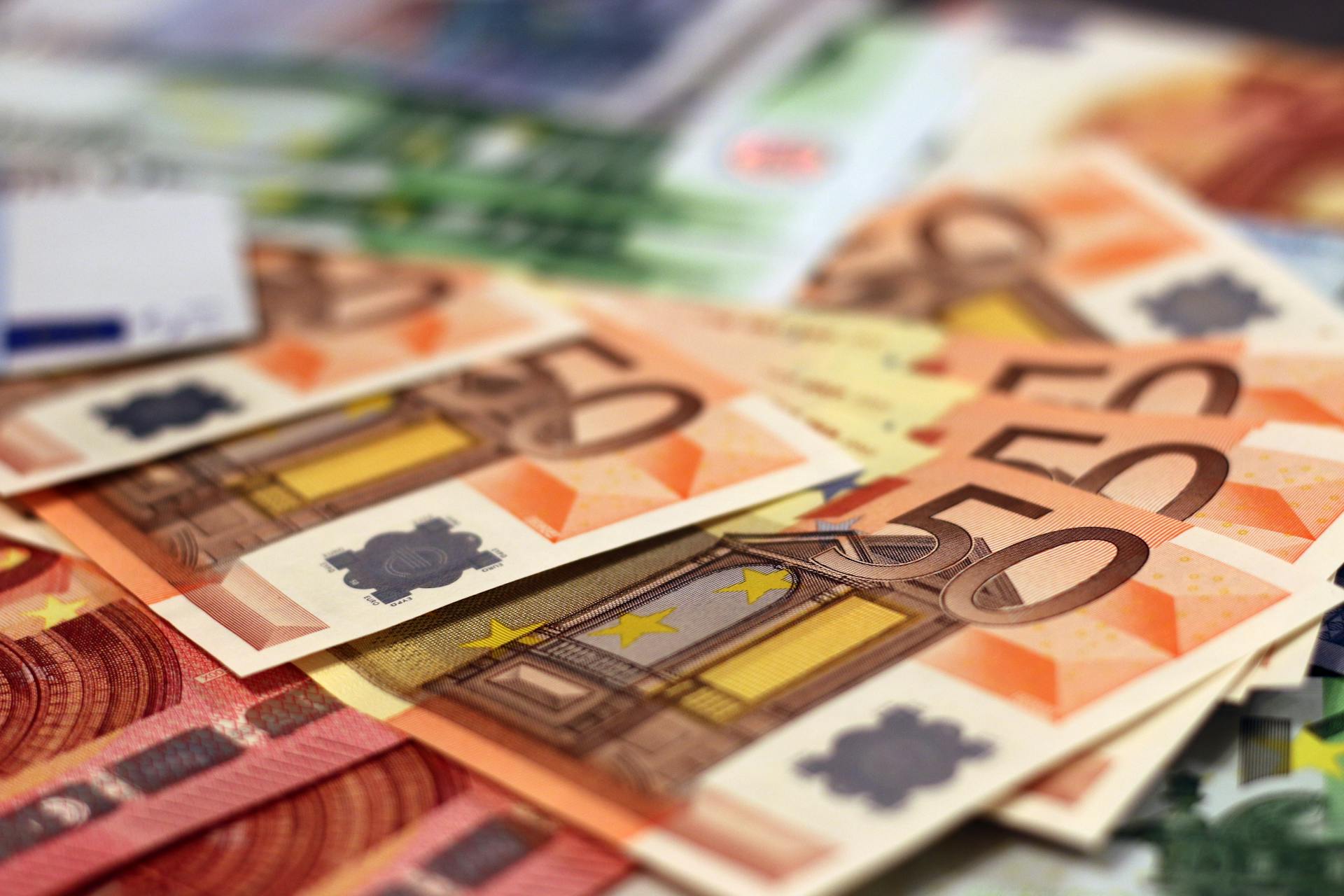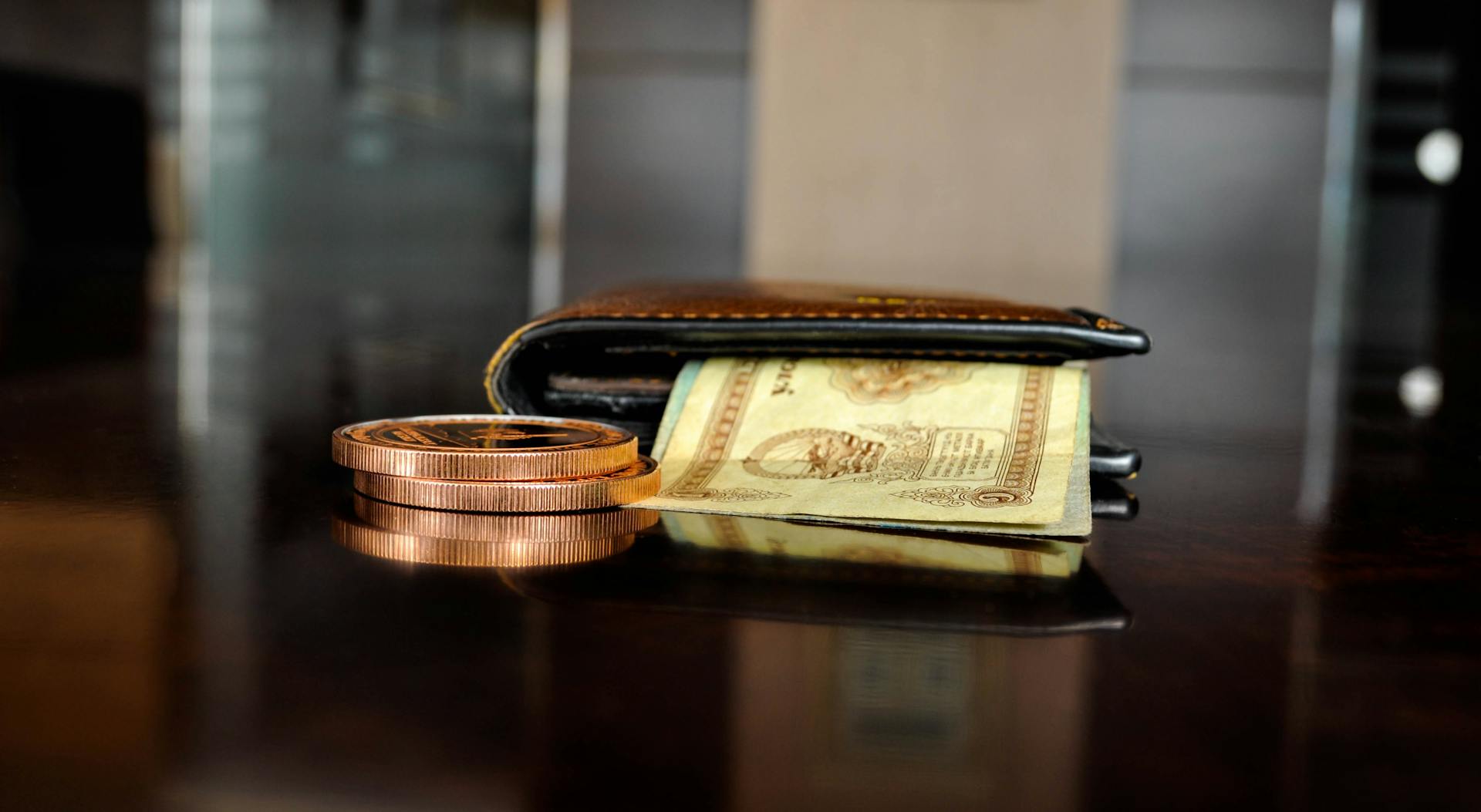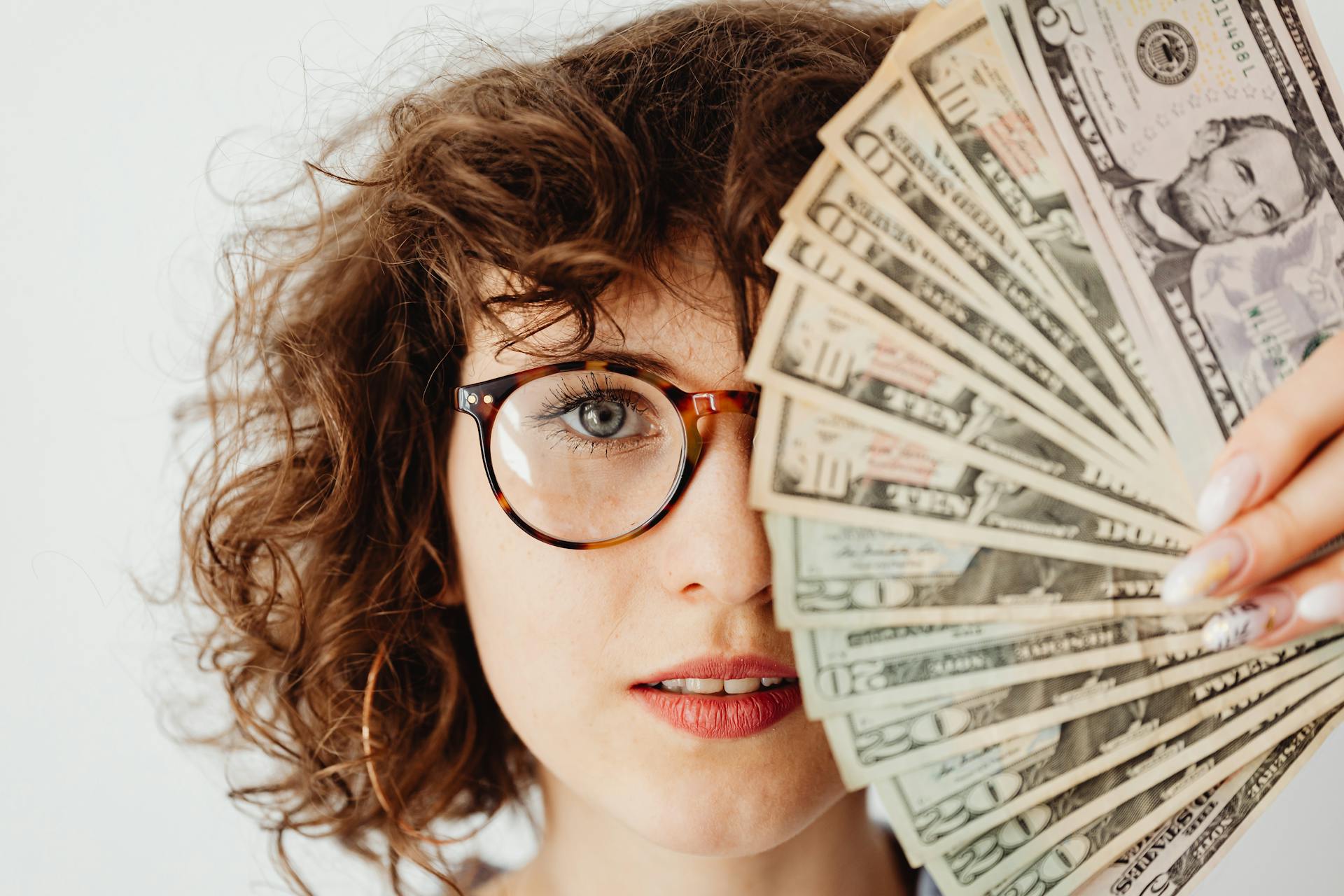
Peru has a unique currency system, and it's essential to understand the basics before traveling or doing business there. The official currency of Peru is the Peruvian Sol, abbreviated as PEN.
You can exchange your money for Peruvian Soles at airports, banks, or currency exchange offices, but be aware that exchange rates can vary significantly depending on the location and provider. Credit cards are also widely accepted, but it's always a good idea to have some cash on hand.
To make the most of your trip, it's a good idea to have some local currency with you when you arrive in Peru, especially if you plan to visit rural areas or smaller towns. This will help you avoid any confusion or inconvenience when trying to pay for things.
For another approach, see: Bhp Billiton Stock Symbol
American Dollars in Peru
American dollars are widely accepted in Peru, making them a convenient currency to bring along on your trip. You can use them for various transactions, including paying for hotel stays, shopping, dining out, and even taking taxis.
Many businesses, such as hotels, restaurants, and stores, accept US dollars as a form of payment. In fact, some even publish their rates in dollars. You'll often see this in tourist areas, especially in cities like Cusco.
However, it's worth noting that while US dollars are widely accepted, they may not be the preferred currency. Peruvian nuevo sol, the local currency, is still widely used and accepted everywhere. In fact, some businesses may even give you change in soles instead of dollars.
It's a good idea to carry small denominations of both currencies to ensure you can make exact payments and avoid any inconvenience. This way, you can avoid having to break larger bills or deal with change that's difficult to use.
If you're planning to use US dollars, be aware that exchange rates may vary, so it's a good idea to check the actual exchange rate before trading your money. Also, keep in mind that bills in bad condition are not accepted, so make sure to bring crisp, new bills.
Recommended read: Interest on Medical Bills
Using ATMs and Credit Cards
In Peru, you can easily access cash by using ATMs and credit cards. Most major credit cards, such as Visa and Mastercard, are widely accepted in Peru.
There are numerous ATMs in Peru, and you can find them in main branches of banks, supermarkets, shopping centers, and even gas stations. ATMs dispense both Peruvian Soles and US dollars, but be aware that they frequently have transaction fees.
ATMs inside banks, stores, or malls are generally safer than street ATMs, which are a common point of theft. It's a good idea to use ATMs inside these secure locations.
If you plan to buy traditional clothing in Peru, cash may be a good alternative, as not all local and smaller markets accept credit cards. However, carrying a little cash is always a good idea, as some businesses may not accept credit cards.
Here are some things to keep in mind when using ATMs and credit cards in Peru:
- Notify your bank or credit card company of your travel plans before you go to avoid any issues with accessing funds while abroad.
- Be aware of any fees associated with international transactions or ATM withdrawals and plan accordingly.
- Keep a copy of your card in use, just in case of emergencies.
It's also a good idea to check the charges of each bank before your trip departure and to find out about the specific instructions to be able to use your debit card in Peru.
Banking and Financial Options
You can easily access cash in Peru using various banking and financial options. Banks are no longer the only option, and you can exchange money at the reception of your hotel or at local banks, but be aware that rates are often lower at exchange houses.
Banks are available throughout the country, with popular banks like Banco de la Nación and BBVA being common. They usually offer competitive rates, but some may charge a transaction fee for exchanging currency. You'll also need identification or an account with the bank.
If you prefer to use ATMs, you'll find them widespread, even in smaller towns and rural areas. ATMs dispense both Peruvian Soles and US dollars, but be aware that they frequently have transaction fees. A good idea is to check the charges of each bank before your trip departure.
Here's a brief comparison of banking and financial options in Peru:
Beyond Traditional Banking
You can exchange money at the reception of your hotel or at a local bank, but be prepared for long lines and lower rates.
In most tourist places and city centers, you'll find money exchange houses where you can change your currency easily.
Some people exchange money on the streets, but it's not a safe option, so it's best to avoid it.
You can also use an ATM to withdraw money, as most of them accept US dollars and Soles.
The exchange rate may differ at ATMs, and international banks may deduct a fee for each transaction you make.
Banks are still available in every city, but you may have to wait in line and deal with lower rates.
In small towns, you may only find the main branches of local banks, but they're still there if you need them.
For more insights, see: H B L Power Share Price
Banks and Financial Options
Banks and ATMs are widely available in Peru, making it easy to access cash and exchange money. You'll find banks like Banco de la Nación and BBVA throughout the country, and ATMs are even present in smaller towns and rural areas.
You might enjoy: Class B Shares Private Company

ATMs in Peru are known as "Cajeros Automáticos" and can be found in main branches, supermarkets, shopping centers, and even gas stations. You'll usually find ATMs for popular banking companies like BCP, Scotiabank, BBVA Continental, and Interbank.
Using ATMs inside banks, stores, or malls is a safer option than using street ATMs, which are often a target for theft. Credit cards are widely accepted in Peru, and it's a good idea to always carry some local currency, especially in local markets where credit cards may not be accepted.
To minimize fees, it's a good idea to check the charges of each bank before your trip departure and to notify your bank or credit card company of your travel plans. You can also use an ATM to withdraw money, but be aware that the exchange rate may differ and international banks may deduct a fee for each transaction.
Here's a comparison of exchange options in Peru:
Remember to always compare the rates and fees offered by different options before making a decision.
Currency Exchange and Carrying
Exchanging and carrying money in Peru requires some planning to avoid any issues.
In Peru, you can exchange money at airports, banks, and currency exchange offices.
The best place to exchange money is at a bank, as they usually offer the best rates.
Carrying large amounts of cash is not recommended, as it can be a target for thieves.
It's best to use a money belt or a secure wallet to carry your money safely.
If this caught your attention, see: Thailand Currency Exchange from Payoneer
Exchanging and Carrying
Peru has a variety of places to exchange money, including banks, currency exchange offices, and some hotels.
It's best to exchange money at banks or official currency exchange offices to avoid scams.
You can exchange money at banks, but it's often a slow process and may require some paperwork.
Some hotels in Peru offer currency exchange services, but the rates may not be the best.
To carry money safely, use a money belt or a secure wallet with a zipper or snap closure.
Avoid carrying large amounts of cash and try to use credit cards or debit cards instead.
Keep your valuables close to you and be mindful of your surroundings, especially in crowded areas.
Suggestion: Currency Use in Brazil
Where to
If you're traveling to a foreign country, you'll want to know where to exchange your currency. Try to avoid exchanging money at airports or hotels, as the rates are often unfavorable.
You can exchange currency at a bank or a currency exchange office, and it's usually a good idea to have some local currency with you when you arrive at your destination. Many banks have a special currency exchange desk or a separate area for international transactions.
Some countries, like Japan and South Korea, have a limited number of ATMs that accept foreign cards, so it's a good idea to have some local currency for these situations. You can also use ATMs to withdraw cash, but be aware of any foreign transaction fees.
In some countries, like Mexico and Brazil, you can use credit cards at many restaurants and shops, but cash is still king. Make sure to inform your bank of your travel plans so they don't flag your transactions as suspicious.
You might enjoy: Functional Currency vs Local Currency
Bad Condition

You'll want to be mindful of the condition of your bills, especially if they're in US dollars. Many people in Peru won't accept banknotes that are not in good condition.
Torn, written-on, or badly worn bills are a no-go. This will avoid problems with future payments.
Dirty or broken foreign banknotes, like US dollars, will also be frowned upon by merchants.
You can exchange these bills for free at the National Bank of Peru, but be prepared for a long line.
See what others are reading: How Medical Bills Are Paid after Car Accident in Texas
Dealing with Counterfeit and Deception
Counterfeit and deception are a significant concern in Peru, especially when dealing with cash transactions. Counterfeit Peru currency, including nuevo sol and US dollar bills, is a recurring problem.
Merchants and consumers in Peru often verify the authenticity of money before accepting payment or change. This is because counterfeit bills and coins are common and can be difficult to spot.
One way to verify the authenticity of money is by holding the bill up to the light to see the watermark. If the lines and borders of the images are not well-defined, it may be a counterfeit bill.
You might enjoy: Bank Bailout Bill
The Peruvian nuevo sol comes in denominations of 10, 20, 50, 100, and 200 bills. However, the 200 bill is less used and often not accepted.
To identify a counterfeit Soles or US Dollar bill, compare its texture with another bill you may have, and check for small details like watermarks and hidden figures that only appear in backlighting. The security band must also change colors depending on the lighting and angle from which it is observed.
Be cautious of money scams and trust your instincts when handling cash transactions. If you feel that something is wrong, ask for the bill or coin to be exchanged.
Tips and Information
When traveling to Peru, it's essential to be aware of the local customs and practices when it comes to money.
The high tourist season in Peru is from April to October, and this is when prices tend to be higher.
It's common to see people carefully examining the money they receive, so don't think twice if you take your time to verify the bills.
Don't be afraid to ask someone to replace a suspicious-looking bill – it's a common practice in Peru.
Haggling is also common in Peru, especially when there's no clear price tag, which includes taxi fares.
To stay safe, always carry a copy of your credit card as well as your main documents.
Discover more: Preferred Equity vs Common Equity in Vc
Economic Analysis
The Peruvian economy is heavily reliant on the export of minerals, particularly copper and gold, which accounts for a significant portion of the country's foreign exchange earnings.
The Peruvian currency, the sol, is also influenced by the country's agricultural sector, which is a major contributor to the economy. Peru is the world's second-largest producer of asparagus.
Peru's economic growth has been steady in recent years, with a GDP growth rate of around 4% annually.
Empirical Model and Data
In economic analysis, a well-crafted empirical model is essential for making informed decisions. The model should be based on a thorough review of existing data.
Suggestion: Project Finance Model
A good empirical model takes into account various economic indicators, such as GDP growth rate, inflation rate, and unemployment rate, which are all crucial for understanding the overall state of the economy.
The data used to build the empirical model should be reliable and up-to-date, often sourced from reputable institutions like the World Bank or the International Monetary Fund.
Economic indicators like GDP growth rate and inflation rate can be influenced by various factors, including government policies, technological advancements, and global events.
A strong empirical model can help identify patterns and trends in the data, allowing for more accurate predictions and informed decision-making.
A fresh viewpoint: Turkish Economic Crisis (2018–current)
Is the Real Misaligned?
The real effective exchange rate (REER) is a complex concept, but essentially it's a measure of how much a country's currency is worth compared to other currencies. In the case of Peru, the estimated results show that the REER has been broadly in line with the fundamentals over the past decade, with some mild misalignments in certain years.

One notable instance of misalignment occurred during 2004-07, when the REER was mildly undervalued by 2¼ percent on average. This was due to the impact of large retrenchments in government consumption, which more than offset the impact of improvements in relative productivity.
The REER was consistent with the equilibrium REER in 2008, indicating a return to alignment. However, the following years saw a different story unfold. During 2009-13, the REER was mildly overvalued by about 4¾ percent on average.
A closer look at the data reveals the magnitude of the misalignment. Here's a breakdown of the actual, equilibrium, and misalignment of the REER for each year from 2004 to 2013:
It's worth noting that this assessment does not necessarily have a normative value, as a REER close to its equilibrium level may still reflect distortions in the fundamentals.
Is the Nuevo Sol a Commodity Currency?
The Nuevo Sol is not a commodity currency, unlike the US dollar which is backed by gold and other precious commodities. This is because the Nuevo Sol is a fiat currency, meaning its value is determined by supply and demand in the foreign exchange market.
The Peruvian government can print as much money as it needs, which has led to inflation rates of up to 30% in some years. This is a major concern for investors and individuals who rely on a stable currency.
The Nuevo Sol is pegged to a basket of currencies, including the US dollar, which helps to maintain its value. However, this peg can be subject to fluctuations in the global economy.
The Peruvian government has implemented policies to control inflation, such as raising interest rates and reducing government spending.
Real-World Example
The Peruvian sol is the official currency of Peru, represented by the symbol S/. It's subdivided into 100 céntimos, with coins circulating in denominations of S/5, S/2, and S/1, and 10, 20, and 50 céntimos.
Peru's top trading partners are China, the United States, Canada, Korea, and Switzerland.
The Peruvian sol is available in banknote denominations of 10, 20, 50, 100, and 200 soles.
Peru's economy is a mix of industries, with copper, gold, oil, and zinc being its largest exports.
Here's a breakdown of Peru's top trading partners:
As of August 2021, one U.S. dollar bought approximately 4.07 PEN.
Frequently Asked Questions
What is the main currency in Peru?
The main currency in Peru is the nuevo sol (S/.), which is divided into 100 céntimos. Learn more about Peru's currency and exchange rates.
What is the best currency to use in Peru?
The official currency in Peru is the Sol, and exchanging cash for cash is the most cost-effective way to get local currency.
Sources
- https://www.machutravelperu.com/blog/money-in-peru
- https://viajesmachupicchu.travel/en/information/what-currency-is-used-in-peru
- https://www.karikuy.com/official-currency-for-peru-what-you-need-to-know/
- https://www.elibrary.imf.org/view/book/9781513599748/ch020.xml
- https://www.investopedia.com/terms/p/pen.asp
Featured Images: pexels.com


